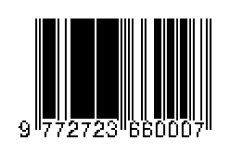Development of Basics of Bowed String Instruments Textbook for Students of Performing Arts Education Program at FKIP Untan
DOI:
https://doi.org/10.59141/jiss.v6i7.1814Keywords:
Bowed String Instrument, Performing Arts Education, Music Education Textbook, Development of Textbook, String InstrumentAbstract
The use of textbooks has become an urgent need for performing art student at FKIP Untan. Therefore, This research was conducted with the aim of developing a Basic Bowed String Instrument Textbook to serve as a guide for students and lecturers, in order to achieve good learning outcomes in accordance with the curriculum objectives. This research method uses a qualitative descriptive method. The research design used in this study is the 4-D Research and Development with the Borg and Gall Model. The development of teaching materials based on textbooks is carried out in several stages, namely the needs analysis stage, product development, and product testing, which is conducted twice: a small group trial with 8 students in the first stage and a large group trial with 17 students. The data collection instruments used were the needs analysis for lecturers and the needs analysis for students in the form of questionnaires and observation sheets. Qualitative data were obtained from expert and student evaluations in the form of suggestions and feedback on the product plan. Quantitative data were obtained from questionnaires resulting from small group trials and large group trials. The data analysis technique used was quantitative descriptive analysis with percentages. The score obtained from media experts (87%) falls into the valid category, and the score from music learning experts (88.3%) also falls into the valid category. The average results of the trials in both small and large groups show a sufficiently valid percentage (75.82%), allowing the textbook to be used with minor revisions.
Published
How to Cite
Issue
Section
License
Copyright (c) 2025 Egi Putri Grandena, Agus Wartiningsih

This work is licensed under a Creative Commons Attribution-ShareAlike 4.0 International License.
Authors who publish with this journal agree to the following terms:
- Authors retain copyright and grant the journal right of first publication with the work simultaneously licensed under a Creative Commons Attribution-ShareAlike 4.0 International. that allows others to share the work with an acknowledgement of the work's authorship and initial publication in this journal.
- Authors are able to enter into separate, additional contractual arrangements for the non-exclusive distribution of the journal's published version of the work (e.g., post it to an institutional repository or publish it in a book), with an acknowledgement of its initial publication in this journal.
- Authors are permitted and encouraged to post their work online (e.g., in institutional repositories or on their website) prior to and during the submission process, as it can lead to productive exchanges, as well as earlier and greater citation of published work.














